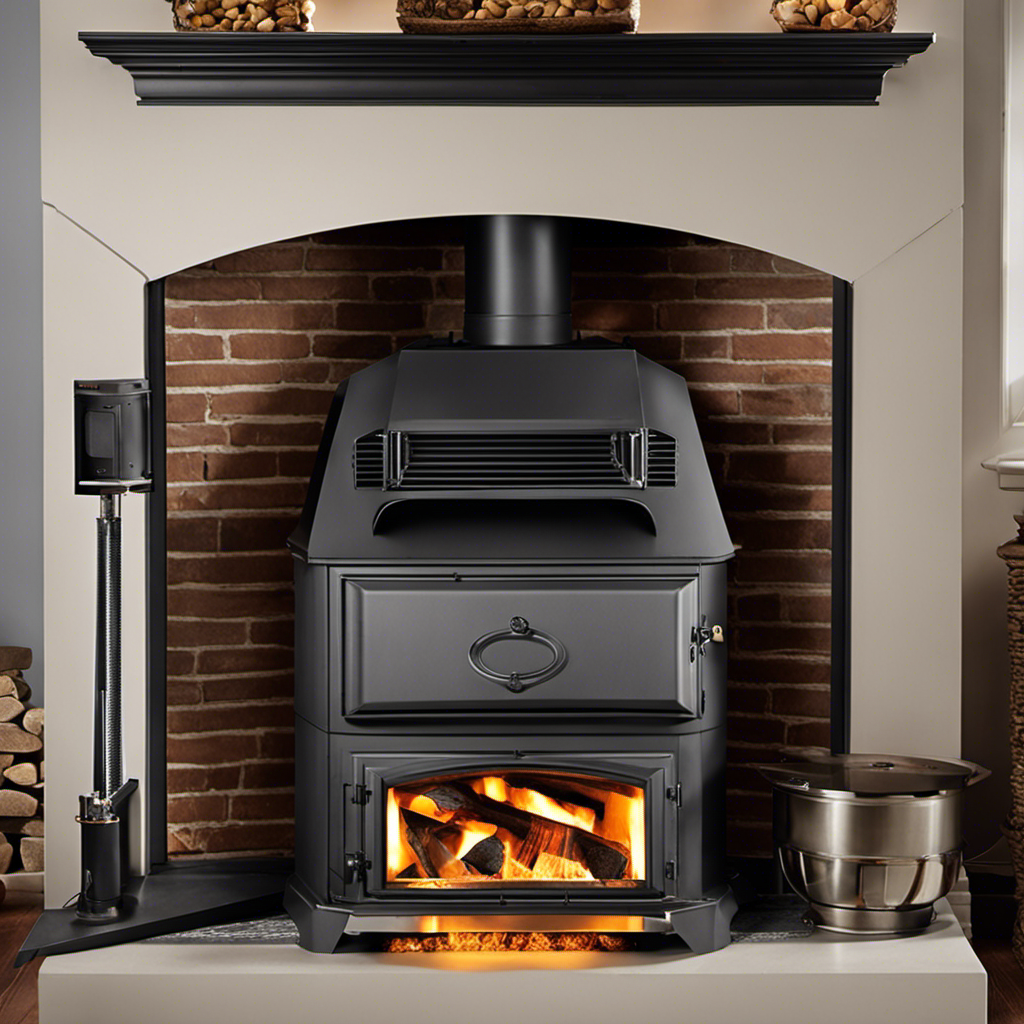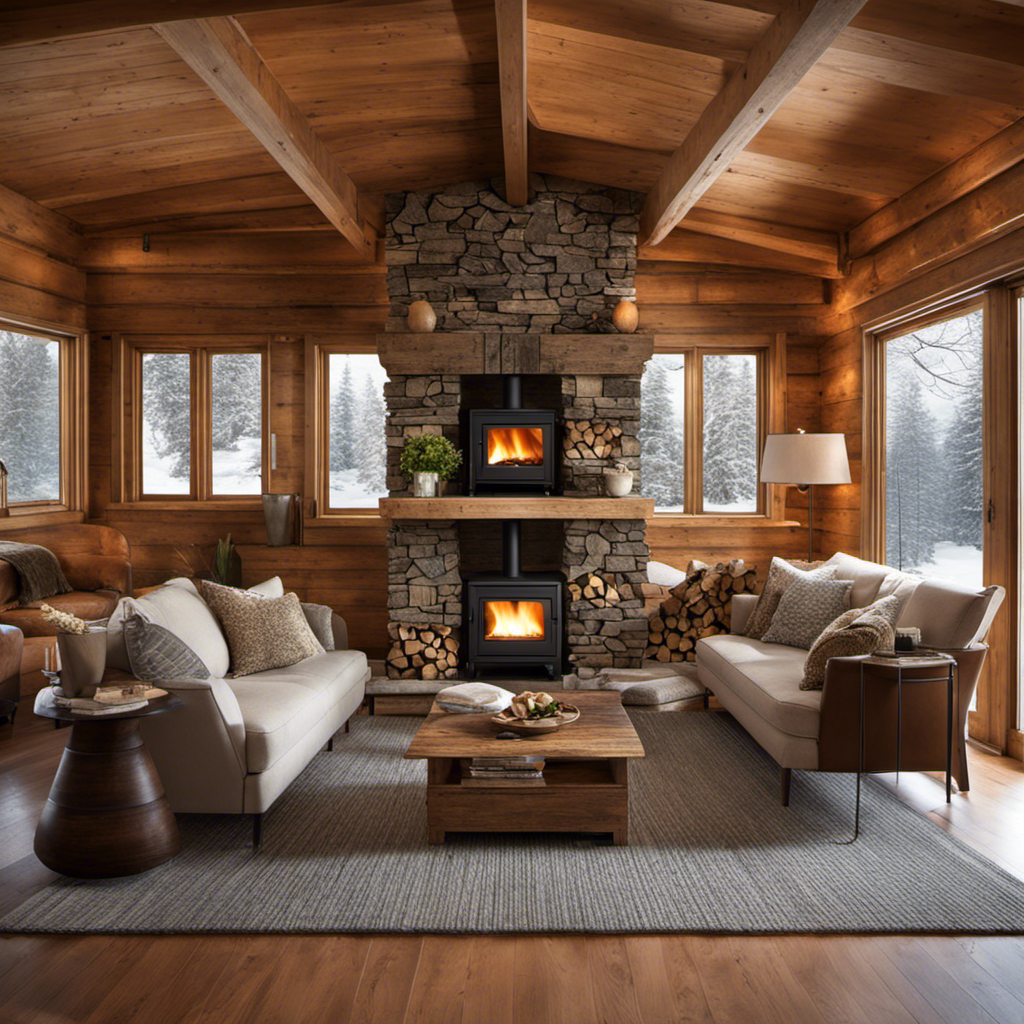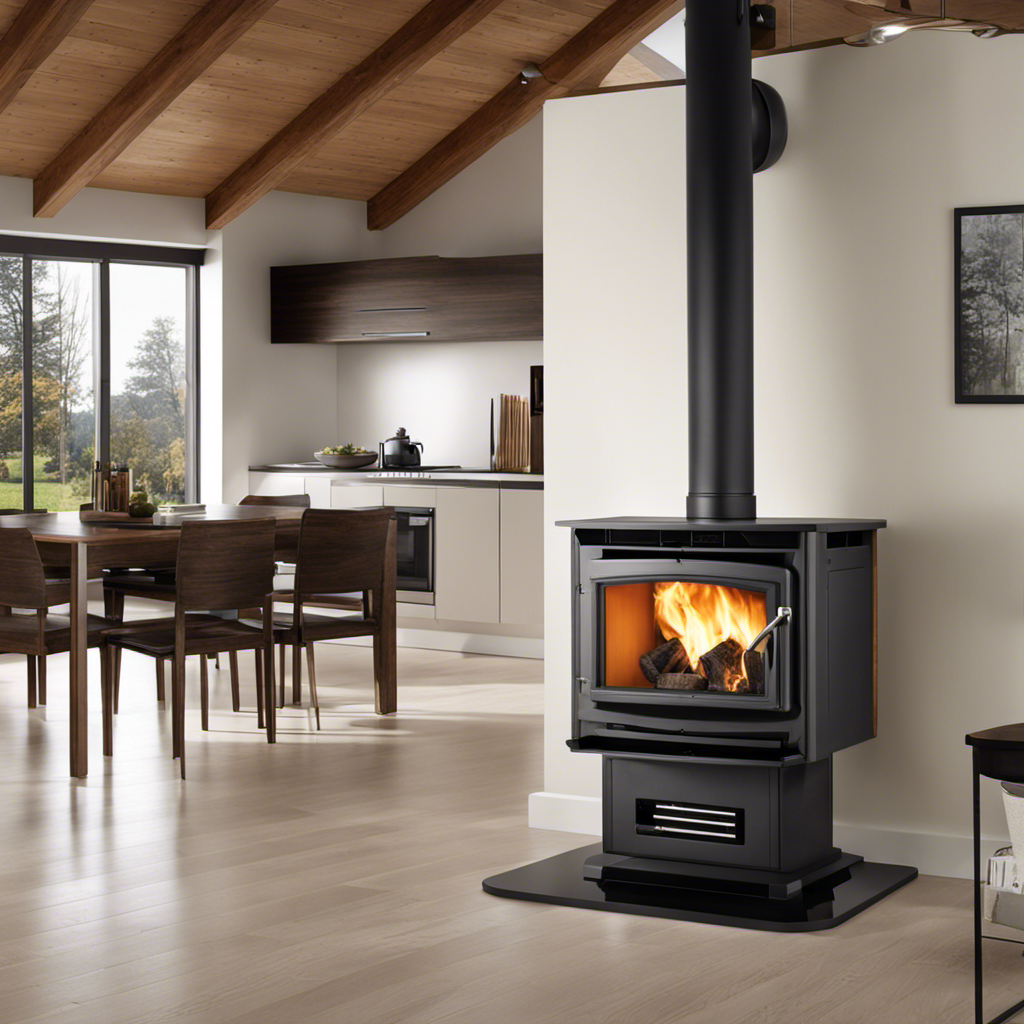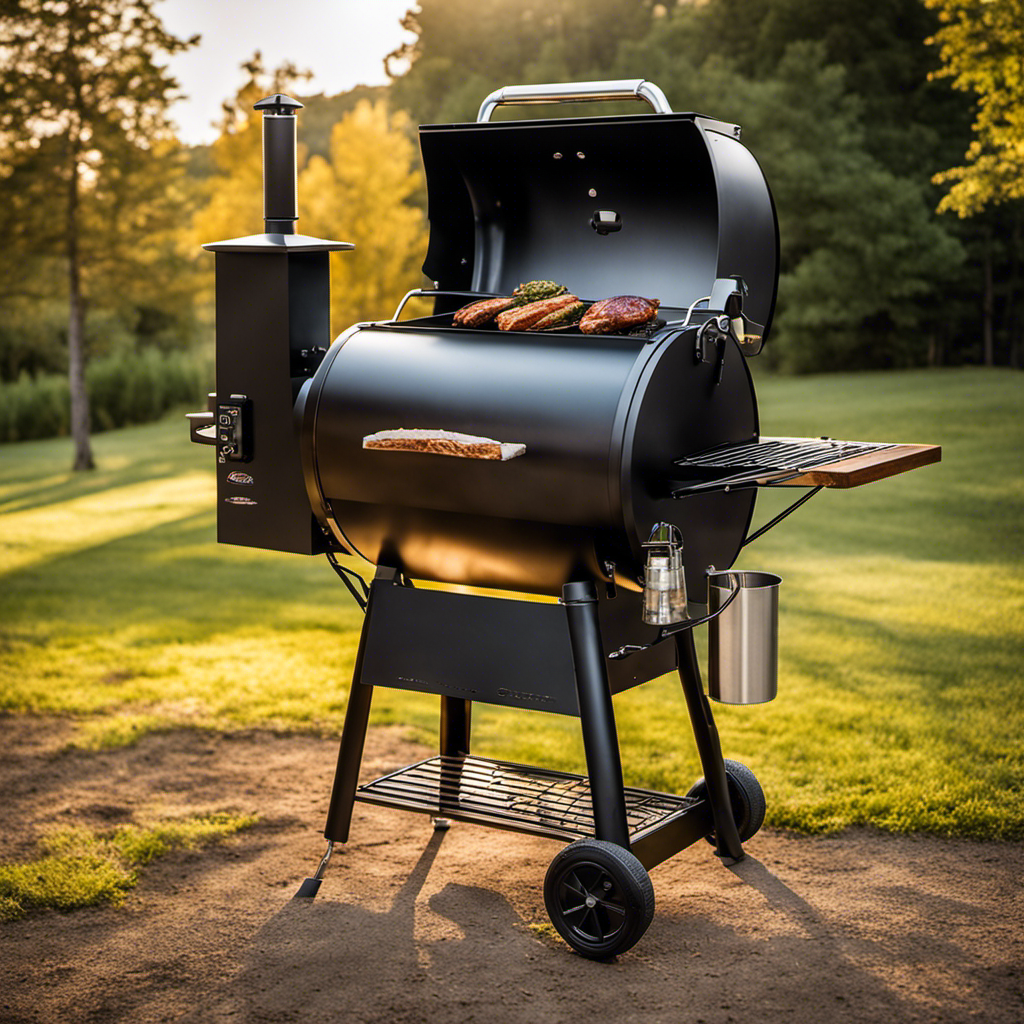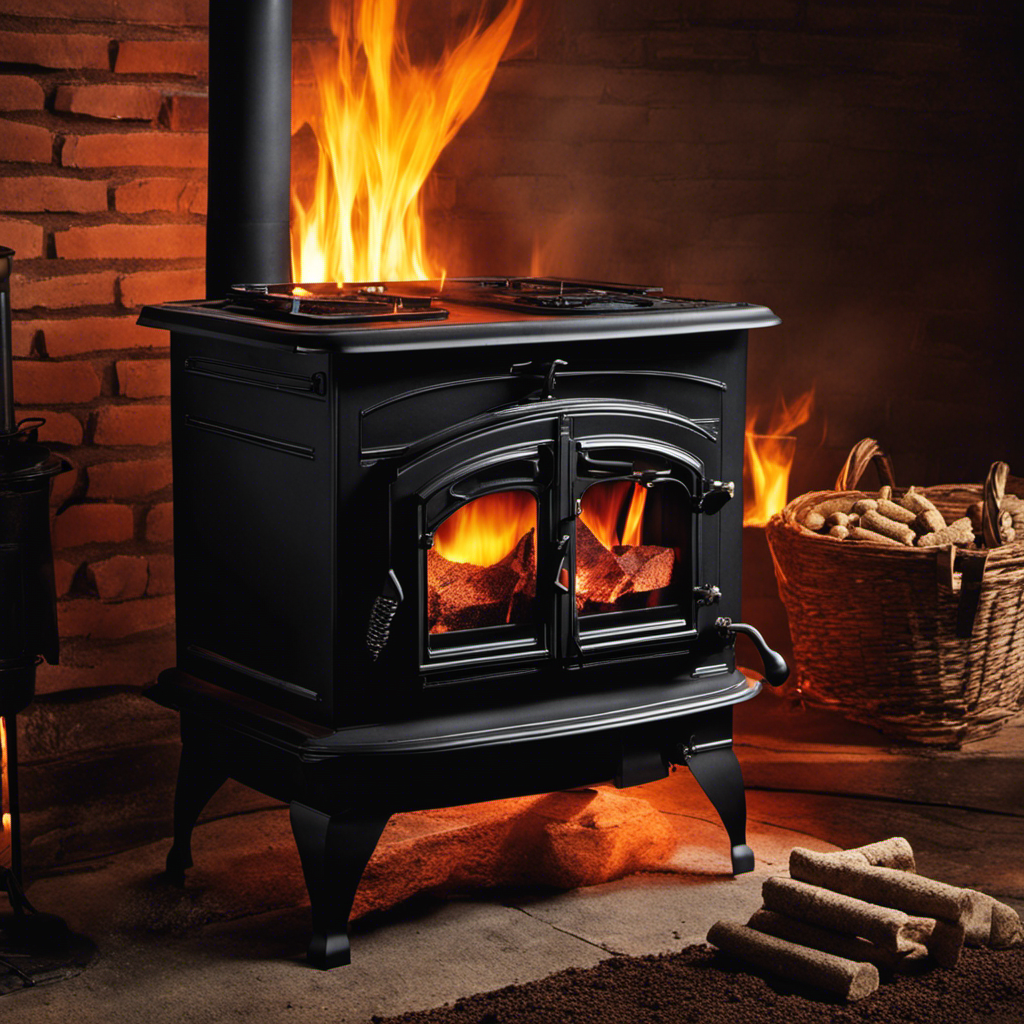As a homeowner, I recognize the importance of keeping your wood pellet stove in prime condition. Did you know that a wood pellet stove often has a lifespan of 15 to 20 years? Hence, refinishing is a critical maintenance task that can extend the life of your stove.
In this article, I will guide you through the step-by-step process of resurfacing your wood pellet stove, from assessing its condition to applying the right resurfacing material.
Get ready to give your stove a fresh new look and ensure its optimal performance for years to come.
Key Takeaways
- Assess the condition of the wood pellet stove by inspecting for signs of damage or wear, such as cracks, chips, or discoloration.
- Prepare the surface for resurfacing by cleaning with mild detergent and warm water, sanding with fine-grit sandpaper, and removing dust or debris.
- Choose the right resurfacing material based on durability and cost effectiveness, such as stove paint, stove wrap, or ceramic tiles.
- Apply the resurfacing material by cleaning and sanding the stove, applying a heat-resistant primer, spreading the material evenly, and troubleshooting any issues that may arise.
Assessing the Condition of the Wood Pellet Stove
To assess the condition of your wood pellet stove, you’ll need to carefully inspect the exterior for any signs of damage or wear.
Start by evaluating the overall appearance of the stove. Look for any cracks, chips, or discoloration on the surface. Pay attention to the seams and joints as well, as these areas are prone to damage.
Next, check the door gaskets for any signs of wear or fraying. Inspect the glass window for any cracks or scratches.
If you notice any damage, it’s important to determine the repair options available to you. Depending on the extent of the damage, you may be able to repair it yourself or seek professional assistance.
Once you have evaluated the damage and determined the repair options, you can proceed to preparing the surface for resurfacing.
Preparing the Surface for Resurfacing
Before you start, make sure the surface of your stove is clean and free of any debris. This is important because any dirt or dust left on the surface can affect the adhesion of the resurfacing material.
To prepare the surface for resurfacing, follow these steps:
-
Cleaning: Use a mild detergent and warm water to clean the surface of the stove. Scrub gently with a soft cloth or sponge to remove any grease or grime. Rinse thoroughly and allow it to dry completely.
-
Sanding: Next, sand the surface of the stove using fine-grit sandpaper. This will help to remove any rough spots or imperfections and create a smooth surface for the resurfacing material to adhere to. Be sure to sand in the direction of the wood grain for the best results.
-
Dusting: After sanding, use a clean, dry cloth or brush to remove any dust or debris from the surface of the stove. This will ensure that the resurfacing material can bond properly to the wood.
-
Tack Cloth: Finally, wipe the surface of the stove with a tack cloth to remove any remaining dust particles. This step is crucial to ensure a clean and smooth surface for the resurfacing material.
By following these steps, you will have a properly prepared surface for resurfacing your wood pellet stove.
Now, let’s move on to choosing the right resurfacing material…
Choosing the Right Resurfacing Material
Now, let’s explore how to select the ideal material for resurfacing your stove.
When choosing the right resurfacing material, it is important to consider both durability and cost effectiveness.
One cost-effective option is stove paint, which is specifically formulated to withstand high temperatures. Stove paint is available in a variety of colors, allowing you to choose one that matches your stove’s aesthetic.
Another option is stove wrap, which is a heat-resistant adhesive film that can be applied directly to the stove’s surface. Stove wrap is easy to install and provides a protective layer that can withstand regular use.
Additionally, ceramic tiles can be a durable and visually appealing choice for resurfacing your stove. They are resistant to heat and can be easily cleaned.
Now, let’s transition into the subsequent section about applying the resurfacing material to the stove.
Applying the Resurfacing Material to the Stove
Once you have chosen the ideal material, it’s important to carefully follow the instructions for applying it to your stove. Here are some tools and techniques you will need to successfully apply the resurfacing material:
-
Prep the surface: Clean the stove thoroughly to remove any dirt, grease, or loose paint. Sand the surface lightly to create a smooth and rough texture for better adhesion.
-
Apply the primer: Use a high-quality primer designed for heat-resistant surfaces. Apply an even coat of primer using a brush or roller, making sure to cover all areas.
-
Apply the resurfacing material: Use a trowel to spread the resurfacing material evenly over the stove surface. Smooth out any imperfections and let it dry completely.
-
Troubleshoot common issues: If you notice any bubbling or peeling, sand the affected area and reapply the resurfacing material. If there are any cracks, use a heat-resistant caulk to fill them in before resurfacing.
By following these steps, you will experience the benefits of resurfacing your wood pellet stove, such as improved appearance and protection against heat damage.
Now, let’s move on to the finishing touches and maintenance tips for your newly resurfaced stove.
Finishing Touches and Maintenance Tips
To complete the finishing touches on your newly resurfaced stove, you may consider adding a protective sealant for extra durability. A sealant not only enhances the stove’s appearance but also helps to protect it from daily wear and tear.
When choosing a sealant, opt for one that is specifically designed for high-temperature applications. Before applying the sealant, ensure that the stove surface is clean and dry. Use a soft cloth to gently wipe away any dust or debris.
Apply the sealant in thin, even coats, allowing each layer to dry completely before applying the next. Once the sealant has dried, it is important to regularly clean and maintain your stove to prolong its lifespan. Use a non-abrasive cleaner and a soft cloth to remove any dirt or stains.
Additionally, check the sealant periodically and reapply as needed to maintain its protective properties.
Can Venting a Wood Pellet Stove Affect the Resurfacing Process?
When it comes to resurfacing, it’s important to consider how vent wood pellet stoves may affect the process. Venting the stove during resurfacing can lead to dust and debris entering the stove, causing potential damage. It’s crucial to properly cover and protect the stove during this process to avoid any issues.
Frequently Asked Questions
Can I Use Regular Paint to Resurface My Wood Pellet Stove?
Yes, you can use regular paint to resurface your wood pellet stove. However, it is important to note that regular paint may not withstand the high temperatures and may not provide the same level of durability as specialized resurfacing materials.
How Long Does the Resurfacing Material Typically Last on a Wood Pellet Stove?
Resurfacing material durability depends on the technique used. Proper preparation and application can extend its lifespan. It’s important to choose a high-quality material to ensure long-lasting results for your wood pellet stove.
Can I Resurface a Wood Pellet Stove That Has Cracks or Damage on Its Surface?
Yes, you can resurface a wood pellet stove that has cracks or damage on its surface. Resurfacing techniques and repairing wood stove surfaces can help restore its functionality and appearance.
Is It Necessary to Remove the Stove’s Doors and Handles Before Applying the Resurfacing Material?
Before applying the resurfacing material, it’s important to remove the stove’s doors and handles. This ensures a smooth and even application. Once removed, you can proceed with resurfacing using regular paint.
Can I Use a Brush or Roller to Apply the Resurfacing Material, or Is a Spray Gun Necessary?
Using a brush or roller for applying the resurfacing material is possible, but a spray gun offers several benefits. It provides a more even and consistent coat, covers larger areas quickly, and allows for better control and precision.
Conclusion
In conclusion, resurfacing a wood pellet stove is a simple yet effective way to restore its appearance and extend its lifespan. By assessing the condition of the stove, preparing the surface, and choosing the right resurfacing material, you can achieve a professional-looking finish.
Remember to apply the material carefully and follow the manufacturer’s instructions for the best results. With proper maintenance, your newly resurfaced stove will continue to provide warmth and comfort for years to come.
As the old saying goes, "A little elbow grease goes a long way," and with resurfacing, you can bring new life to your wood pellet stove.
Logan’s affair with adventure began in childhood. He hailed from a small town where vast forests bordered one side and endless shores stretched on the other. His days were spent exploring uncharted woods, climbing tall trees, or listening to the tales of old sailors. This early immersion in a world brimming with stories and mysteries became the foundation of his passion for writing.


